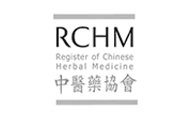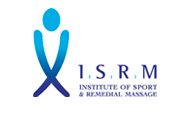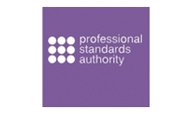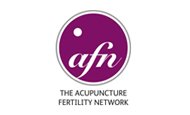
Neuromuscular therapy is a proven way to improve coordination, stability, and motor control. Used frequently in the field of performance enhancement and overall fitness, it goes beyond traditional methods of conditioning and muscle training by addressing neuromuscular pathways.
As well as enhancing individual physical performance through better joint and muscle function, this method is also widely used to eliminate forms of pain, such as chronic pain in the back or neck, as well as lower the chance of injury.
How Does Neuromuscular Therapy Work?
Neuromuscular therapy, which includes myofascial trigger point therapy, myofascial release, and a range of movement based release and retraining methods, is a method of applying very specific and sustained pressure to parts of the body in areas where there is tightness. By administering controlled force to these ‘trigger points’, it is possible to induce a release of tension and improve blood circulation.
Trigger points develop for many reasons, including ongoing instances of microtrauma that stem from overusing a certain muscle or putting high levels of pressure on certain parts of your body during day-to-day life. Unknown to many, they can even occur because of ongoing participation in certain sports as well as direct trauma from injuries.
Whatever the cause, our neuromuscular technique aims to relieve this stress and release tension—softening tough fibres and improving overall movement and health.
NMT Ischaemic Compression
There is a method which gets called neuromuscular technique used by sports massage and other therapists. This involves fairly strong pressure being applied to tender and tight points and asking the client to breathe deeply ‘into’ the pain, or waiting for the tendernbess t subside and then increase the pressure to a degree. These methods are neuromuscular in that they work by altering the body’s perception of pain.
They are related to a techniques called ischaemic compression which uses precisely controlled pressure to literally pump blood and fluids through the tight tender muscle tissue. These manual compressions help because in chronic restrictions including trigger points, lack of circulation can sustain the contracture, and the build up of waste products irritates the nerve endings and then heightens the experience of pain.
Restoring local circulation is therefore very important in reducing discomfort in painful muscles.
Self help tip- Ischaemic compression
- Find a particularly sore or tight point in your bad area
- Squeeze or press it with your fingers
- Alternate squeezing for 5 seconds and releasing for 2 seconds
- repeat for between 1-2 minutes
- normally in that time frame the tenderness will significantly reduce and your range of movement will improve.
Integrated Neuromuscular Inhibition Technique- INIT
This is an osteopathic protocol for the treatment of trigger points, and has a high rate of success restoring function. Ischaemic compression is applied as above until a change is reported by the client, then a positional release is applied to ‘reset’ the neuromuscular system, then a contraction is asked for in the muscles and muscle energy technique used to stretch, returning the muscle to its normal resting length. This is very important to treat the trigger point and keep it from returning.
References and Further reading
- Chaitow L. (2005) Neuromuscular Technique
- Chaitow L. & Delany J. (2005) Clinical application of Neuromuscular techniques Vol 1 & 2
- Travell J. & Simons D. (1998) Myofascial pain and dysfunction: A trigger point manual Vol 1&2.
Access Neuromuscular Therapy in London, UK
If you’re looking for neuromuscular therapy in London or want to learn more about our neuromuscular technique at Acubody, don’t hesitate to get in touch with our team.
NMT Ischaemic Compression
There is a method which gets called neuromuscular technique used by sports massage and other therapists. This involves fairly strong pressure being applied to tender and tight points and asking the client to breathe deeply ‘into’ the pain, or waiting for the tendernbess t subside and then increase the pressure to a degree. These methods are neuromuscular in that they work by altering the body’s perception of pain.
They are related to a techniques called ischaemic compression which uses precisely controlled pressure to literally pump blood and fluids through the tight tender muscle tissue. These manual compressions help because in chronic restrictions including trigger points, lack of circulation can sustain the contracture, and the build up of waste products irritates the nerve endings and then heightens the experience of pain.
Restoring local circulation is therefore very important in reducing discomfort in painful muscles.
Self help tip- Ischaemic compression
- Find a particularly sore or tight point in your bad area
- Squeeze or press it with your fingers
- Alternate squeezing for 5 seconds and releasing for 2 seconds
- repeat for between 1-2 minutes
- normally in that time frame the tenderness will significantly reduce and your range of movement will improve.
Integrated Neuromuscular Inhibition Technique- INIT
This is an osteopathic protocol for the treatment of trigger points, and has a high rate of success restoring function. Ischaemic compression is applied as above until a change is reported by the client, then a positional release is applied to ‘reset’ the neuromuscular system, then a contraction is asked for in the muscles and muscle energy technique used to stretch, returning the muscle to its normal resting length. This is very important to treat the trigger point and keep it from returning.
References and Further reading
- Chaitow L. (2005) Neuromuscular Technique
- Chaitow L. & Delany J. (2005) Clinical application of Neuromuscular techniques Vol 1 & 2
- Travell J. & Simons D. (1998) Myofascial pain and dysfunction: A trigger point manual Vol 1&2.







